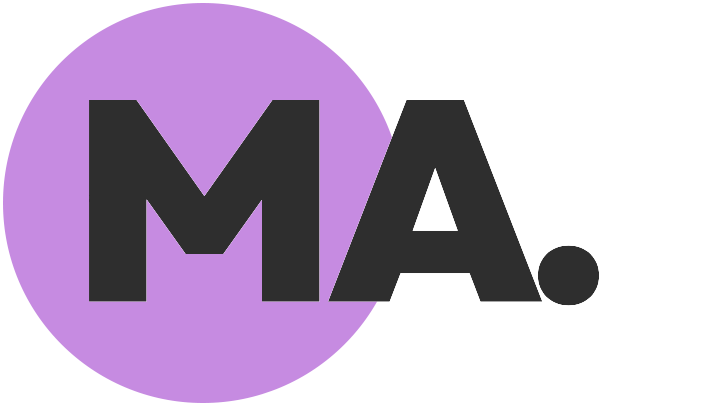The Troubled Teen Industry (TTI) is a multi-billion dollar network of punitive and powerful congregate care programs that claim to reform struggling youth through behavior modification and other non-evidence-based practices. These largely unregulated facilities are often referred to by a myriad of names, such as boot camps, residential treatment centers, therapeutic or religious boarding schools, and wilderness therapy programs. Here are the top 10 things you should know about this industry.
“We were forced to endure verified brainwashing and abusive methods. For typically two days at a time, we were deprived of sleep and water.”
Anonymous Survivor
q
1. Programs Utilize Public and Private Funds
Due to a lack of required reporting, the exact number of youth in these programs is unknown. However, estimates suggest that about 120,000-200,000 young people reside in them annually, with more than 50,000 of those youth privately placed by caregivers. The programs can cost caregivers up to $30,000 a month, but the financial impact affects far more individuals than those who can afford the hefty price tag. Annually, approximately $23 billion in public funds supports the practices of programs. In addition, the industry preys on disadvantaged youth by tapping into public funds to house migrant children and youth from foster care, juvenile justice, and school systems.
2. Youth are often kidnapped
Many programs recommend transporting a child to the facility via youth escort services or “legal kidnapping.” Escort services are controversial as they are subject to little to no government regulation. The transport itself can be highly traumatic to young people, as they are often forcefully seized from their beds in the middle of the night by strangers, handcuffed or restrained, and then taken from their homes to the program. During this process, youth are commonly told, “We can do this the easy way or the hard way.” Survivors report that this experience alone left permanent trauma lasting into adulthood.
3. It’s a punitive “Tough Love” Industry
Upon arrival at the program, youth are further traumatized when their belongings are immediately taken from them during the intake process. They also may be subjected to a forced strip search or cavity search during this time. It is not until after this process is completed that the young person is allowed to be acquainted with their peers. Since many programs utilize an antiquated point- and level-based system, youth initially have no privileges and are forced to earn fundamental human rights. This “tough love” approach attempts to correct behavior instead of treating mental health issues or working through prior trauma.
Given the lack of individualized treatment, youth are expected to adhere to the same set of stringent rules and harsh punishments. Some punishments or consequences reported in TTI programs include but are not limited to:
- Emotional, physical, and sexual abuse
- Deprivation of basic necessities (e.g., food, water, sleep, restroom access)
- Attack therapy, aversion therapy, or conversion therapy
- Forced labor and exercise
- Isolation or solitary confinement
- Exposure to harsh elements such as extreme heat, snow, or rain
- Physical, chemical, and mechanical restraint
4. There is abuse, neglect, and death
The industry’s historic lack of regulation, transparency, and accountability has led to a clear pattern of abuse. Instead of delivering evidence-based therapeutic services and education to at-risk youth, young people often experience life-altering maltreatment such as psychological harm, sexual and bodily assault, physical and medical neglect, hospitalizations, and even death. In fact, over 350 youth have died at the hands of the TTI.
The abuse is further compounded by the program’s function as a “total institution” where young people live under the program’s authority. Youth are stripped of all autonomy, restricted from contact with their caregivers and the outside world, and forbidden to freely leave the program for months to years.
Government officials and the public have started to notice survivors and the long-standing pattern of abuse in TTI programs. In July 2022, Senator Murray (D-WA) and Senator Wyden (D-OR) launched a federal investigation into four of the largest companies operating youth treatment facilities to better understand child abuse allegations in the programs.
5. They use educational consultants and deceptive marketing
Costing thousands of dollars, unsuspecting caregivers may be guided towards educational consultants as a solution to their struggling child. While educational consultants claim to be experts in educational or therapeutic placements for youth, many are unqualified; instead of providing proper guidance, they contribute to one of the largest pipelines to TTI programs through marketing. Educational consultants have reportedly received unethical kickbacks and make referrals to programs, often sight unseen. Many programs utilize marketing tactics remarkably similar to multi-level marketing schemes, emphasizing keeping youth in programs as long as possible or referring as many new clients as possible. This is allegedly done through referral bonuses paid to caregivers who recruit other caregivers or corporate bonuses for program owners and staff based on the average headcount of youth in the program. Due to these incentives, the focus is not on outcomes but on how many children are sent to the program and how long they are enrolled.
“Our letters were censored, read, and occasionally fully confiscated before being sent to us or received by our parents.”
Anonymous Survivor
6. Vulnerable youth and caregivers are targeted
TTI programs utilize deceptive marketing to present themselves as legitimate mental health treatment providers. They entice vulnerable decision-makers by using verbiage that includes evidence-based therapeutic modalities, but the advertised approaches are often unethical and non-evidence-based. By pathologizing normal teenage behavior such as talking back, internet addiction, truancy, sexual exploration, and breaking the rules at home, programs treat teenagehood as a problem that can and should be solved.
Young people can be enrolled in TTI programs through a variety of pipelines. While some youth are funneled into programs through foster care, juvenile justice, and school systems, others find themselves in these congregate care placements at the hands of the child welfare system, medical and mental health providers, and educational consultants, among other entities. Many minors are privately placed in programs by caregivers.
7. Regulation and Reporting are Lacking
A lack of regulation and safeguards perpetuates programs opening with problematic hiring practices such as minimal or non-existent background checks. This sets the stage for abuse. Program owners and staff also often lack the experience or degrees needed to make them qualified to care for struggling youth. Since private equity firms own many programs, they are incentivized to keep young people enrolled and reduce overhead costs by underpaying and overworking staff to increase profit margins.
Regulatory and reporting loopholes exist, making it challenging to hold programs accountable and create transparency when abuse or neglect occurs. When abuse or neglect comes to light in a TTI program, incidents are traditionally handled internally and not reported to authorities or child protective services. If the authorities do get involved and the program subsequently receives negative PR, they often “close” the program and create a new LLC that they can rebrand under. Rebranding is exceptionally problematic because child sexual predators and other worrisome personnel can move from program to program completely unnoticed and escape responsibility and accountability.
8. Many programs have cult origins
Most people are surprised to learn that many modern-day TTI programs derive from Synanon, one of America’s most dangerous cults in history. Synanon started in 1958 as an off-shoot of Alcoholics Anonymous. Synanon practiced a very controversial therapy they dubbed “the game,” which consisted of all members verbally attacking another member who was chosen to be in the hot seat. Synanon members would verbally berate, humiliate, and insult the members until they were broken down enough to acquiesce to the Synanon program.
Members of Synanon were forced to shave their heads, mate with others aside from their spouses, and have forced sterilizations and abortions. The cult’s tactics were so severe that the Los Angeles Police Department got involved, Synanon’s leadership collapsed under pressure, and the cult subsequently disbanded. However, Synanon’s influence on loyal members was already solidified, and previous devotees started their own Synanon spin-off programs focused on youth. This was the start of an industry that exploited youth and disguised abuse as “treatment.”
9. Survivors are Unsilenced
Shared lived experience creates a powerful voice when creating movements for change. Providing support and outlets to survivors of the TTI is essential for their long-term success and mental health. There is a community of survivors from TTI programs, and it plays a vital role in Unsilenced’s ability to create lasting social change. With survivors from hundreds of facilities spanning more than 50 years, each individual brings insight and a unique perspective to the movement to stop institutional abuse.
10. Their “treatment” isn’t evidence-based
This antiquated, “tough love” approach of being removed from the home goes against what we now know: youth with strong and cohesive relationships with family continue to experience mental health benefits, including lower levels of depressive symptoms until their late 30s. Many youth leaving TTI facilities grow up to struggle with trauma disorders and fractured familial relationships and have difficulty obtaining further schooling or maximizing career opportunities due to their educational setbacks.
The research is clear. Forcing young people out of their communities, labeling them as a “problem,” and creating a residential melting pot of struggling youth – and calling it “treatment”- isn’t working. It is actually causing harm. In fact, one study of youth with emotional and behavioral disorders illustrated how 60% of young people had reduced symptoms of ADHD, anxiety, and depression when treated within their communities. However, only 11% had reduced symptoms when treated in residential care.



